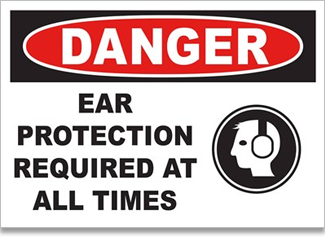Police Officers and Hearing Loss: A Growing Concern
03
February,
2023
2 MINUTE READ

Everyone one knows police work involves inherent dangers, but did you know one of the biggest dangers officers now face is permanent hearing loss? According to the recent article Five Surprising Jobs Where Workers are Losing Their Hearing, police work is among the top five. The article states, "From discharging firearms to policing traffic or demonstrations, the noise demands on officers can be intense. Intense too, is the need to hear well in situations where split-second responses can save lives."
As testimony to this growing problem, the National Institute for Occupational Safety and Health (NIOSH) and the National Hearing Conservation Association (NHCA) have recognized Deputy Sheriff Ryan Lee Scott as this year's Safe-in-Sound Excellence in Hearing Loss Prevention Award winner. A police trainer in Florida, Scott has spent years gathering research and calling attention to the occupational hazard of hearing loss. During his acceptance speech, he said:
"Unfortunately one of the higher liability areas-firearms training-provides almost no education on hearing loss prevention or hearing protection devices. Most law enforcement officers are thrown an old pair of ear muffs and told to spend the next eight hours on the firearms range. There are no earplugs, fit testing, nor comprehensive strategy to provide adequate hearing protection devices (HPDs). During this time they could be accruing hundreds to thousands of rounds of exposure to firearms impulse noise."
Scott said that law enforcement offers firearms training four times a year for the standard patrol officer, monthly for SWAT teams and special forces, and twenty times per month for firearms instructors.
Where Training and Visual Communication Meet
While firearms training is crucial so officers are prepared for life-threatening situations on the street, training on hearing loss prevention is increasingly important, as well. Scott said proper fitting earplugs and encouraging agencies to adopt hearing conservation plans are tantamount to prevention. One survey conducted in his home state of Florida showed that up to 89% of officers had never had proper training regarding hearing loss, nor did they have proper Hearing Protection Device (HPD) use and fit training.
 Visual communication promoting ear protection use goes hand-in-hand with proper training. With a new study revealing that 40 million American adults currently experience hearing loss, and OSHA requiring employers to provide hearing PPE, the word about ear protection is out. Proper signage can point the way and remind people to use hearing protection, especially police officers in firearms training. With DuraLabel printers and supplies, facilities such as training centers can remind users that hearing PPE is required. Safety leader Duralabel offers dozens of premade signs alerting people of noise danger and protection whereabouts in its online store.
Visual communication promoting ear protection use goes hand-in-hand with proper training. With a new study revealing that 40 million American adults currently experience hearing loss, and OSHA requiring employers to provide hearing PPE, the word about ear protection is out. Proper signage can point the way and remind people to use hearing protection, especially police officers in firearms training. With DuraLabel printers and supplies, facilities such as training centers can remind users that hearing PPE is required. Safety leader Duralabel offers dozens of premade signs alerting people of noise danger and protection whereabouts in its online store.
Training and visual communication can bring law enforcement closer to Scott's overall goal, which is to make the law enforcement profession "a little safer for the next generation of officers who will replace those who are currently working tirelessly to improve America's safety."
RELATED RESOURCES

Workplace Safety During the Coronavirus Pandemic
Workplaces and their employees can stay on top of coronavirus prevention and potential spreading through ...
Read
Construction Leaders Investing in Future of Overall Growth
Most crane counts in big cities throughout the U.S. are holding steady or growing. This is an indicator that ...
Read
OSHA Revises Construction Rules for Confined Spaces
Rule affects general contractors and specialty-trade and employers involved in residential construction. In ...
Read.png)


